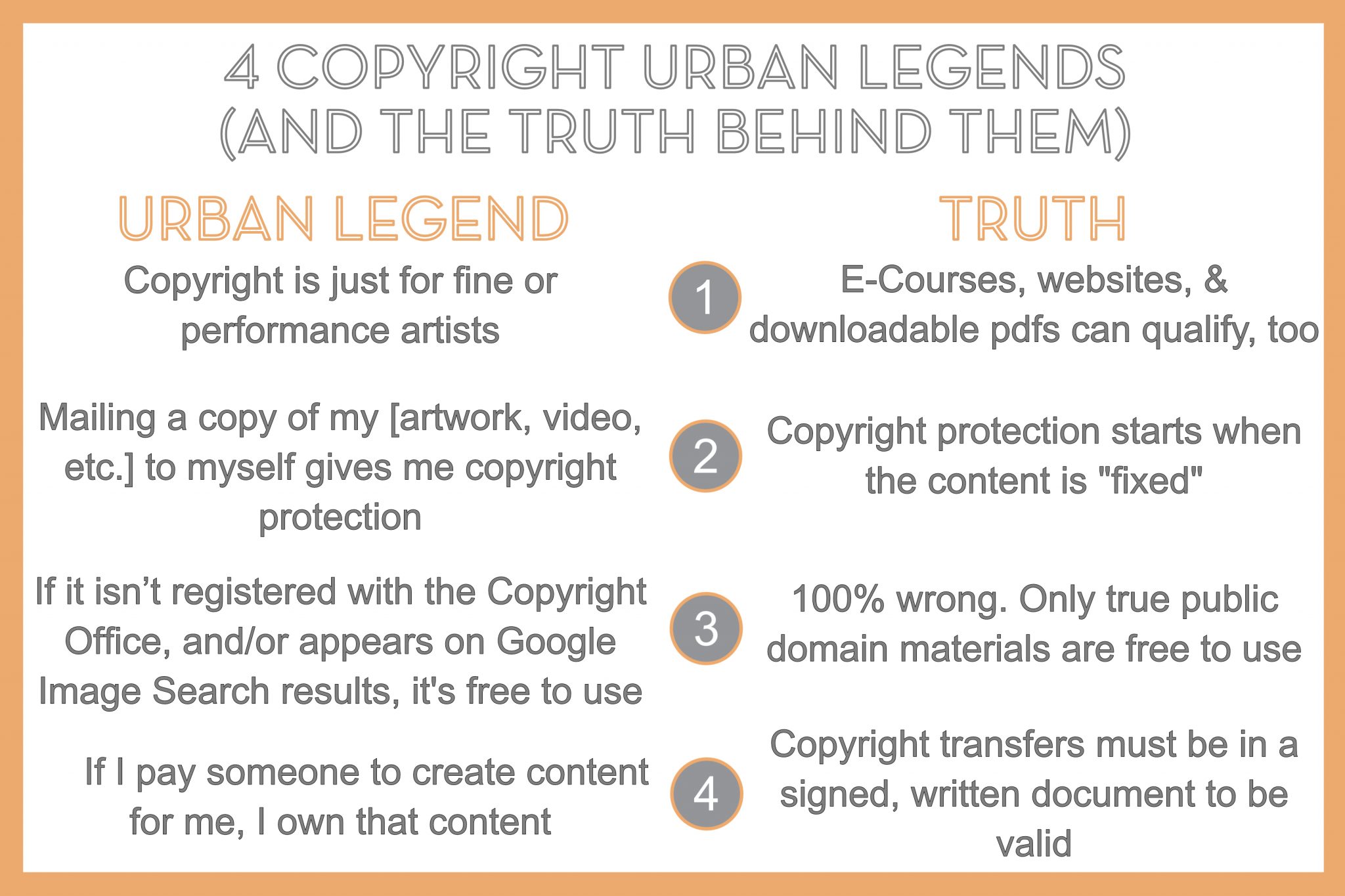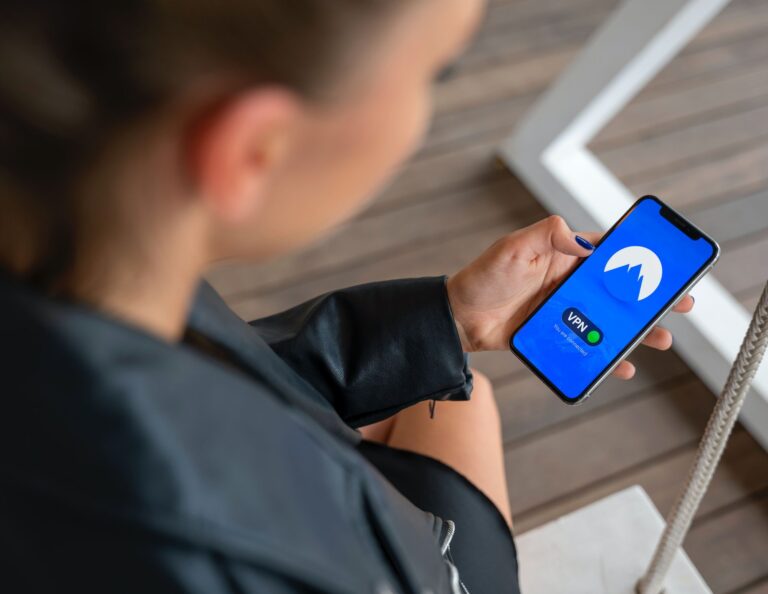Ah, copyright! Often misunderstood, but frequently talked about among creative brand owners. The “misunderstood” part I’m referring to? A slew of urban legends and myths (really, downright lies) that I hear circulated and repeated by my clients. Allow me to clear the air when it comes to these misunderstanding.
Disclaimer: Of course, none of this is legal advice—it’s just here to educate you. Legal analysis can change based on one single fact, so please be sure to consult a lawyer before taking legal action (or deciding not to act).
Myth #1: Copyright is just for fine or performance artists
For whatever reason, there’s a more natural association between copyright and fine artists or musicians. But copyright law applies to so much more. (I won’t bore you with exact language from the U.S. Copyright Act, but here’s a technical description of what qualifies for copyright protection.) In plain, non-legal language, here are some of the different types of creative content that are protectable under U.S. copyright law:
- Text
- Music
- Graphic Designs (aka 2-D artwork, including infographics)
- Video (aka “audiovisual” works)
- Printable PDFs (a combination of text and 2-D artwork)
- E-Courses (a combination of text, graphic designs, video, music, and/or printable pdfs)
- Websites/Blogs (this includes visual elements—like layout, graphic designs, photographs, and text—and the source code, which consists of a lot of text)
So, you see? Copyright law actually applies to more than the traditional arts.
Myth #2: Mailing a copy of my [artwork, video, etc.] to myself gives me copyright protection
This concept is sometimes referred to as the “poor man’s copyright.” But the truth is, this does nothing in terms of copyright protection. Copyright protection exists the moment you “fix” your creative work in some kind of tangible media. In other words, once it makes the journey from inside your head to a piece of paper or recording, you have some basic copyright protection in that work.
Formally registering a work with the Copyright Office isn’t required for protection, it just comes with several hefty benefits (the ability to get attorneys’ fees covered, establishing a public record of your ownership, and the potential to recover between $750 and $300,000 per work infringed, to name a few).
But the mail thing? Pure urban legend.
Myth #3: If it isn’t registered with the copyright office, I’m free to use it. (See also: “If it’s on Google Images, I can use it for free/it’s in the public domain.”)
No, no, no. No. This is simply not true. Remember our discussion in Copyright Myth # 2? Creative works don’t have to be registered with the Copyright Office in order to have some basic copyright protection. In terms of Google Image Search, that is another (related) urban legend. Folks mistakenly think that if an image winds up on Google Image Search results (especially results for queries like “royalty-free photo of a balloon” or “public domain photo of man at work”), that image is free to use. The truth is, it’s difficult to know whether something is truly in the public domain, subject to creative commons zero or otherwise copyright-free. Some stock photography websites will inform you in their website policies and/or terms of use on the copyright status or usage guidelines pertaining to their photos. (And if they don’t—download and use at your own risk!)
Myth #4: If I pay someone to create content for me, I own that content.
If I had one wish when it came to copyright urban legend debunking, it would be that every creative entrepreneur everywhere would stop believing this one. U.S. law states that copyright transfers are not valid unless they are in a signed written document. Put differently, if you create a website, logo, or other creative work for a client, you technically own that creative work unless there’s a signed written online contract that says otherwise. This is great news for the creator, but not such great news for someone that uses a lot of contractors in the course of their business. The law is very much in the creator’s favor (unless the creator is an employee—then a different rule applies). The fix? Get copyright transfers in writing, if that’s part of the arrangement.
Now that you’re better educated about the most common copyright myths, spread the word! The more knowledgeable we all are when it comes to these urban legends, the more missteps we can avoid.




